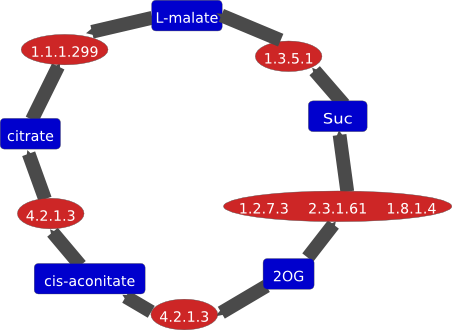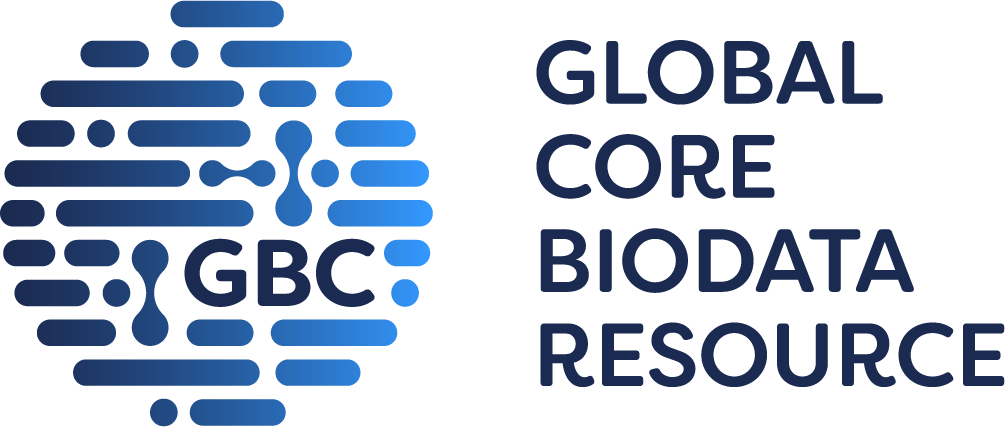EC Number   |
General Information   |
Reference   |
|---|
    1.4.1.27 1.4.1.27 | physiological function |
construction of a genome-scale model of human cell metabolism to investigate the potential metabolic alterations in cells using net zero ATP glycolysis. A pathway for ATP generation involves reactions from serine biosynthesis, one-carbon metabolism and the glycine cleavage system, and is transcriptionally upregulated in an inducible murine model of Myc-driven liver tumorigenesis. This pathway has a predicted two-fold higher flux rate in cells using net zero ATP glycolysis than those using standard glycolysis and generates twice as much ATP with significantly lower rate of lactate, but higher rate of alanine secretion |
760049 |
    1.4.1.27 1.4.1.27 | physiological function |
deletion of the gcvT homolog, i.e. T-protein, in attenuated and virulent Francisella tularensis strains. Deletion mutants are auxotrophic for serine but behave similar to wild-type strains with respect to host cell invasion, intracellular replication, and stimulation of TNFalpha. The glycine cleavage system is required for the pathogenesis of virulent Francisella tularensis in a murine model. Deletion of the gcvT gene delays mortality and lowers bacterial burden, particularly in the liver and bloodstream |
759738 |
    1.4.1.27 1.4.1.27 | physiological function |
glycine cleavage system and cAMP receptor protein coregulate Cas3 of the CRISPR/Cas system and contribute to the defence against invasive genetic elements. Silencing of the glycine cleavage system encoded by the gcvTHP operon reduces Cas3 expression. Addition of N5,N10-methylene tetrahydrofolate activates Cas3 expression. A cAMP receptor protein encoded by Crp activates Cas3 expression via binding to the Cas3 promoter in response to cAMP concentration. The glycine cleavage system regulates Cas3 through association with cAMP receptor protein |
760231 |
    1.4.1.27 1.4.1.27 | physiological function |
H-protein of the glycine cleavage system localizes into vesicles in the cell of Trimastix. When overexpressed in yeast, H- and P-protein are transported into mitochondrion. The first 16 amino acids of H-protein are necessary for this transport |
760050 |
    1.4.1.27 1.4.1.27 | physiological function |
in an LpdA deletion mutant, inducible GCV enzyme activity is not detected. A D-3-phosphoglycerate dehydrogenase SerA/LpdA double mutant is unable to utilize glycine as a serine source and lacks detectable GCV enzyme activity |
759421 |
    1.4.1.27 1.4.1.27 | physiological function |
in tobacco plants overexpressing the Arabidopsis thaliana H-protein, under controlled environment conditions an increase in biomass is evident. Targeted overexpression of the H-protein using the leaf-specific promoter ST-LS1 has a positive impact on biomass, but higher levels of overexpression of this protein driven by the constitutive CaMV 35S promoter result in a reduction in the growth of the plants. In the constitutive overexpressor plants, carbon allocation between soluble carbohydrates and starch is altered, as is the protein lipoylation of the pyruvate dehydrogenase and 2-oxoglutarate complexes |
759926 |
    1.4.1.27 1.4.1.27 | metabolism |
isotopic labeling to explore the in vitro and in vivo metabolic fate of the 2-carbon from [2-13C]glycine and [2-13C]serine. As the 2-carbon of glycine and serine is decarboxylated and catabolized via the GCS, the original 13C-labeled 2-carbon is transferred to tetrahydrofolate and yields methylene-tetrahydrofolate in the mitochondria. In hepatoma cell-lines, 2-carbon from glycine is incorporated into deoxythymidine, species of purines (deoxyadenine and deoxyguanine), and methionine |
759374 |
    1.4.1.27 1.4.1.27 | metabolism |
isotopic labeling to explore the in vitro and in vivo metabolic fate of the 2-carbon from [2-13C]glycine and [2-13C]serine. In healthy mice, incorporation of GCS-derived formate from glycine 2-carbon is found in serine, methionine, dTMP, and methylcytosine in bone marrow DNA. Labeled glycine 2-carbon directly incorporates into serine, adenine and guanine (at C2 and C8 of purine) in the cytosol |
759374 |
    1.4.1.27 1.4.1.27 | metabolism |
liver mitochondria actively catalyze the cleavage of glycine into methylene-THF, CO2, and ammonia, but fail to appreciably catalyze CO2 formation from the alpha-carbon of glycine. The one-carbon compound derived from glycine in the avian livers is utilized largely for the synthesis of uric acid. The yields of 14C-hypoxanthine from 14C-glycine, especially from glycine-2-14C, are significantly increased by the addition of mitochondria to the soluble liver fraction, and under these conditions the ratio of the yields of 14C-hypoxanthine from glycine-l-14C and 2-14C rises to 1:2.3 |
758693 |
    1.4.1.27 1.4.1.27 | physiological function |
mutations in Gldc result in severe or mild elevations of plasma glycine and model non-ketotic hyperglycinemia. Liver of Gldc-deficient mice accumulates glycine and numerous glycine derivatives, including multiple acylglycines. Levels of dysregulated metabolites increase with age and are normalised by liver-specific rescue of Gldc expression. Brain tissue exhibits increased abundance of glycine, as well as derivatives including guanidinoacetate. Elevation of brain tissue glycine occurs even in the presence of only mildly elevated plasma glycine in mice carrying a missense allele of Gldc. Treatment with benzoate enhances hepatic glycine conjugation thereby lowering plasma and tissue glycine. Administration of glycine conjugation pathway intermediate, cinnamate, similarly achieves normalisation of liver glycine derivatives and circulating glycine |
759585 |





